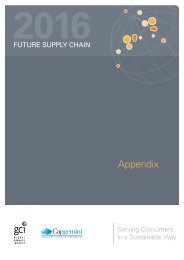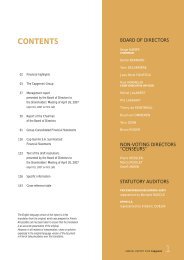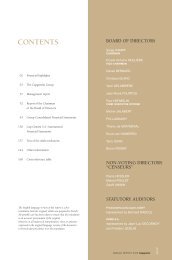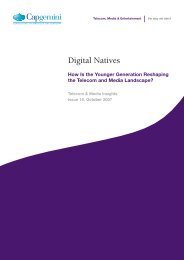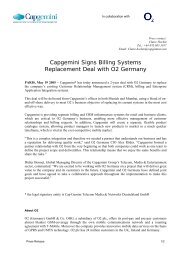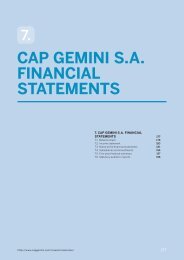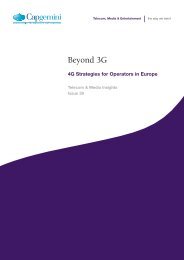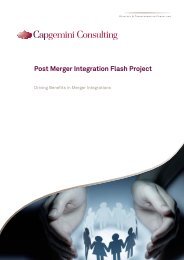Transportation Management Report 2011 - Capgemini
Transportation Management Report 2011 - Capgemini
Transportation Management Report 2011 - Capgemini
You also want an ePaper? Increase the reach of your titles
YUMPU automatically turns print PDFs into web optimized ePapers that Google loves.
Organizational<br />
The core processes or selected<br />
products of a company can be<br />
addressed one after another<br />
depending on the benefits and risks<br />
associated with them. An example<br />
for an air and ocean LSP might be to<br />
arrange their processes in ascending<br />
order of complexity, i.e:<br />
• Air freight import<br />
• Air freight export<br />
• Sea freight import<br />
• Sea freight export<br />
A further level of segmentation<br />
could be introduced by considering<br />
product and services offerings. For<br />
example, commodity products could<br />
be targeted first, followed by more<br />
complex products in a subsequent<br />
phase.<br />
35<br />
Functional domains<br />
The functional domains of TMS offer<br />
another degree of flexibility. In this<br />
context, it is possible to distinguish<br />
between core functionality and<br />
supporting functionality.<br />
For instance, your TMS could initially<br />
be implemented for purchase order<br />
management purposes only. The<br />
transportation core functions would<br />
then be phased in at a later stage. A<br />
typical phased approach could look<br />
as follows:<br />
• Phase 1: Master Data cleansing<br />
and Purchase Order <strong>Management</strong><br />
functionality<br />
• Phase 2: Resource <strong>Management</strong><br />
• Phase 3: Change <strong>Management</strong>,<br />
Subcontractor <strong>Management</strong><br />
• Phase 4: Core TMS functionality<br />
Geographical coverage<br />
Geographical coverage offers another<br />
option for giving the structure some<br />
flexibility. When selecting the target<br />
locations (regions, countries, sites),<br />
it is necessary to look for the right<br />
balance between risk mitigation,<br />
leverage of business benefits, and<br />
gaining rollout and transformation<br />
momentum within the company.<br />
Optimizing the financial<br />
investment flow<br />
To ensure that you can evaluate your<br />
migration options properly you need<br />
to determine the business benefits as<br />
well as the cost of implementation<br />
and migration on a work package<br />
level.<br />
Varying the migration path within<br />
the given constraints allows you to<br />
consider individual options with<br />
respect to the required investment as<br />
well as the resulting business benefits<br />
over time. This allows you to achieve<br />
a cash-flow structure that meets the<br />
company’s individual constraints.<br />
Conclusion<br />
Logistics specialists are faced with the<br />
problem of modernizing an inflexible<br />
application landscape while under<br />
considerable budget constraints.<br />
<strong>Capgemini</strong> can support you with<br />
state-of-the-art methodology and<br />
long-term experience to define the<br />
right transformation approach for a<br />
phased introduction of a TMS by:<br />
Maximizing the use of packagebased<br />
sector-specific solutions and<br />
combining these with individual<br />
elements where required to create a<br />
cost-optimized solution<br />
Using robust architecture and<br />
application components to ensure<br />
sustainability, flexibility, and a<br />
significantly reduced time to market<br />
when integrating future requirements.<br />
Developing a thorough design that<br />
will ensure high flexibility in shaping<br />
the migration path and thus help in<br />
optimizing the investment flow/ROI<br />
to meet the company’s requirements.





